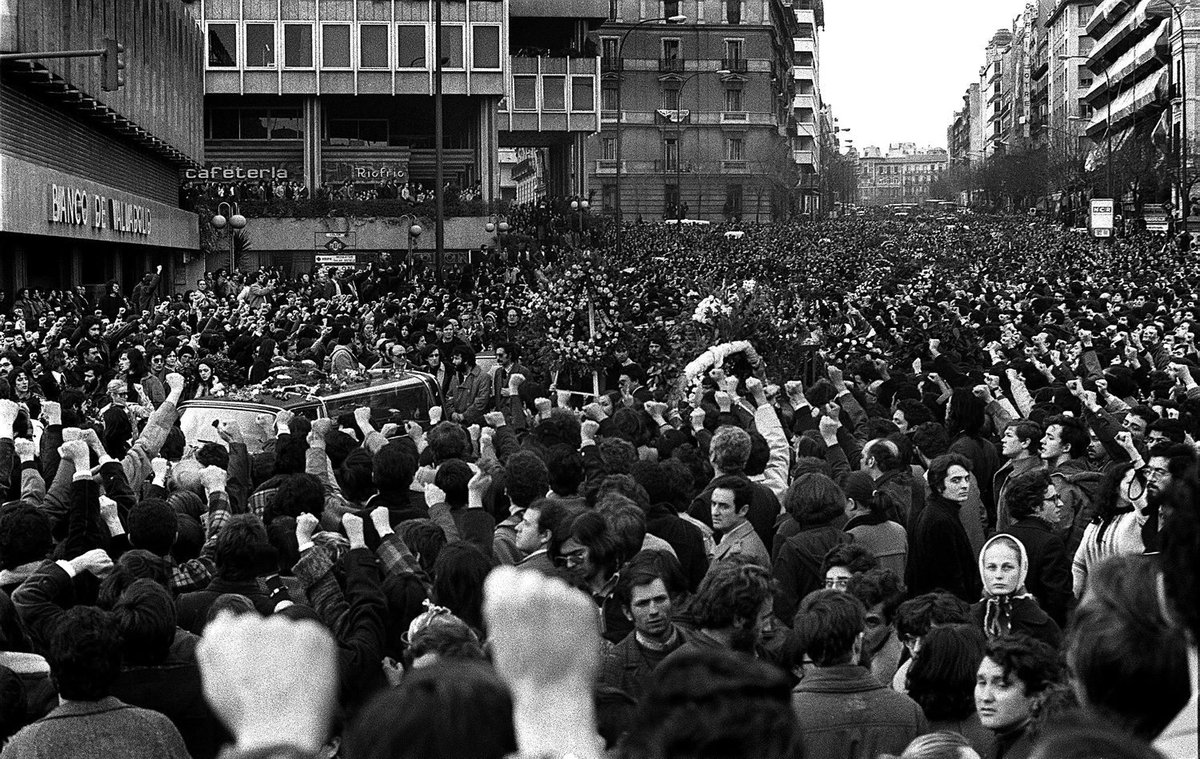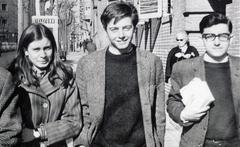
1977 Atocha Massacre Site Madrid: Visiting Hours, Tickets, and Historical Information
Date: 14/06/2025
Introduction
The Atocha Massacre site in Madrid is a place of deep historical resonance, marking a turning point in Spain’s transition from dictatorship to democracy. On January 24, 1977, five labor lawyers—advocates for workers’ rights and democracy—were murdered in their office at Calle de Atocha 55 by far-right extremists. This act of political violence shocked the nation, galvanized the movement for democratic reform, and accelerated the legalization of previously banned political parties. Today, the site and its associated memorials—most notably “El Abrazo” (The Embrace) sculpture and the commemorative plaque—stand as enduring tributes to those who lost their lives and symbolize the resilience and unity of Spanish society in the face of adversity (Madrid Tourism Official Site, Dayhist, Madrid Metropolitan).
Table of Contents
- Historical Background
- Memorials and Sites of Remembrance
- Visitor Information
- Nearby Attractions
- Visiting Tips and Photographic Spots
- Annual Commemorations and Public Memory
- FAQ
- Conclusion
- Sources
Historical Background
On January 24, 1977, Spain was still grappling with the aftermath of Franco’s dictatorship. A group of far-right extremists attacked a law office at 55 Calle de Atocha, targeting lawyers affiliated with the Communist Party of Spain (PCE) and the Workers’ Commissions (Comisiones Obreras, CCOO). Five were killed, and four were seriously wounded (Factoria Historica; Madrid Metropolitan). Rather than destabilize Spain’s fragile democratic transition, the massacre unified public sentiment against violence and hastened the path toward constitutional democracy (Dayhist).
The dignified, nonviolent response of the victims’ relatives and the public became a symbol of reconciliation. Massive demonstrations followed, influencing the legalization of political parties and contributing directly to the passage of Spain’s 1978 Constitution.
Memorials and Sites of Remembrance
El Abrazo Monument (Plaza de Antón Martín)
The principal monument commemorating the massacre is “El Abrazo” (“The Embrace”), located in Plaza de Antón Martín, close to the original law office. Commissioned by Madrid’s City Council and promoted by Comisiones Obreras, this bronze sculpture is based on Juan Genovés’s painting “Amnesty,” an icon of the Spanish Transition (esmadrid.com). The monument’s circle of life-sized figures in embrace symbolizes solidarity, reconciliation, and the pursuit of peace. A commemorative plaque at its base reads: “To the lawyers of Atocha: if the echo of their voice weakens, we will perish”—a paraphrase of Paul Éluard.
Commemorative Plaque at Calle de Atocha 55
Outside the original law office, a plaque honors those who lost their lives. While the building itself is not a museum, visitors often stop here for moments of reflection, especially during annual commemorations (esmadrid.com). The proximity of the El Abrazo monument links the physical and symbolic spaces of remembrance.
Visitor Information
Location and Access
- El Abrazo Monument: Plaza de Antón Martín, Madrid. Nearest Metro: Antón Martín (Line 1), at Calle Atocha 54.
- Calle de Atocha 55: Short walk from the monument, accessible from the street.
Opening Hours and Admission
- Both the El Abrazo monument and the commemorative plaque at Calle de Atocha 55 are outdoor public sites, accessible 24 hours a day.
- Admission: Free
Accessibility
- Both sites are wheelchair accessible with paved paths and nearby public transportation.
Guided Tours
- Several local operators offer guided walking tours of Madrid’s political history, often including the Atocha Massacre sites. These tours provide valuable context about the massacre’s impact.
Nearby Attractions
- Museo Reina Sofía: Renowned for its collection of modern and contemporary art, including Juan Genovés’s “Amnesty.”
- Retiro Park: A large, historic park ideal for relaxation and reflection.
- Puerta del Sol: A central city square rich in history.
- Atocha Station: Notable for its architecture and tropical indoor garden (Madridista Forever).
Visiting Tips and Photographic Spots
- Daytime visits offer the best lighting for photographs and enhance visibility of the monuments.
- The El Abrazo monument, the commemorative plaque, and nearby plazas provide excellent photo opportunities.
- Respectful conduct is encouraged, especially during commemorative events.
Annual Commemorations and Public Memory
Each January 24, ceremonies are held at the El Abrazo monument and Calle de Atocha 55. These solemn gatherings involve survivors, relatives, public officials, and citizens, emphasizing the values of justice, democracy, and peace (Madrid Metropolitan). The massacre’s legacy endures in public memory, with numerous Madrid streets and squares named in honor of the victims.
FAQ
Q: Is there an entrance fee to visit the Atocha Massacre sites?
A: No, both El Abrazo and Calle de Atocha 55 are free and open to the public.
Q: Can I visit the monuments at any time?
A: Yes, both sites are accessible 24/7.
Q: Are guided tours available?
A: Yes, several guided walking tours include these sites. Check with local tour operators or Madrid’s tourism office.
Q: Are the sites wheelchair accessible?
A: Yes, both are accessible by wheelchair.
Q: What are nearby cultural attractions?
A: The Reina Sofía Museum, Retiro Park, Puerta del Sol, and Atocha Station are all within walking distance.
Conclusion
The Atocha Massacre site and its memorials are essential destinations for understanding Spain’s journey to democracy. They offer accessible, meaningful spaces for reflection and connection to the nation’s recent history. Proximity to major attractions and free admission make them ideal for both casual tourists and history enthusiasts. Whether visiting during the annual commemorations or at any time of year, these sites provide powerful reminders of the values of justice, reconciliation, and democratic progress. For enriched exploration, consider joining a guided tour or using the Audiala app for self-guided experiences.
Sources
- Madrid Tourism Official Site
- Madrid Metropolitan
- Dayhist
- Factoria Historica
- esmadrid.com
- Madridista Forever


































































































